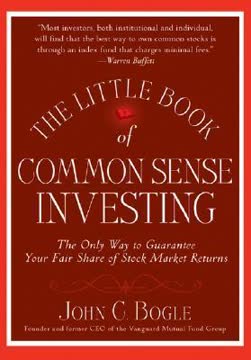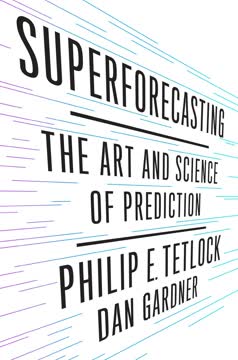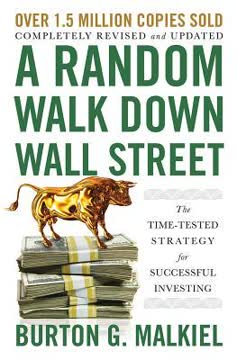Key Takeaways
1. Economics is about rational choices, not just money
Economics is that way of understanding behavior that starts from the assumption that individuals have objectives and tend to choose the correct way to achieve them.
Rational decision-making. Economics applies to all aspects of human behavior, not just financial transactions. It assumes people make choices to best achieve their goals, given constraints. This includes decisions about time, relationships, and even criminal activity.
Value beyond money. Economic value is revealed through actions, not just monetary transactions. People make trade-offs between different goods, services, and experiences based on their personal preferences. For example, the value of leisure time versus working extra hours.
- Key concept: Opportunity cost - the next best alternative given up when making a choice
- Applies to: Consumer decisions, business strategies, government policies
- Examples: Choosing a career, deciding to get married, voting in elections
2. Price equals value equals cost in efficient markets
In equilibrium, price equals marginal value equals marginal cost.
Market equilibrium. In a well-functioning market, prices adjust until supply equals demand. At this point, the price of a good reflects both its value to consumers (what they're willing to pay) and its cost to produce (what suppliers need to charge).
Allocative efficiency. This equilibrium ensures resources are allocated efficiently. Goods are produced up to the point where the benefit to society (value) equals the resources used (cost). Any deviation would result in a net loss.
- Signals: Prices convey information about scarcity and desire
- Adjustments: Shortages drive prices up, surpluses drive them down
- Real-world complication: Markets are rarely perfectly efficient
3. Competitive markets lead to efficient outcomes
A competitive market is efficient.
Invisible hand at work. When many buyers and sellers interact in a market without significant barriers, the result tends to be economically efficient. No central planning is needed to coordinate production and consumption.
Benefits of competition. Firms are incentivized to:
- Produce at lowest possible cost
- Innovate to attract customers
- Allocate resources to their most valued uses
Limitations. Perfect competition rarely exists in reality. Market power, externalities, and imperfect information can lead to inefficiencies that may justify intervention.
4. Monopolies and market failures create inefficiencies
The problem is a particular kind of production function: one for which minimum average cost occurs at a quantity too high to permit perfect competition.
Monopoly power. When a single firm dominates a market, it can restrict output and raise prices above competitive levels. This leads to deadweight loss – potential gains from trade that go unrealized.
Natural monopolies. Some industries have such high fixed costs that it's most efficient for a single firm to serve the entire market. Examples include utilities and infrastructure.
Regulatory challenges:
- Price controls can create shortages or surpluses
- Breaking up monopolies isn't always feasible or desirable
- Government-granted monopolies (patents) have both costs and benefits
5. Public goods and externalities require creative solutions
Information is in large part a public good; because it is a public good, it is underproduced.
Market failures. Some goods and services are difficult for markets to provide efficiently:
- Public goods: Non-excludable and non-rivalrous (e.g., national defense, clean air)
- Externalities: Costs or benefits that affect third parties (e.g., pollution, education)
Potential solutions:
- Government provision or regulation
- Defining property rights (e.g., tradable pollution permits)
- Coase theorem: Negotiation when transaction costs are low
- Pigouvian taxes/subsidies to internalize externalities
Creative private approaches: Bundling public goods with private goods, reputation systems, and voluntary collective action can sometimes address these issues without government intervention.
6. Time, uncertainty, and information shape economic decisions
In order to argue for licensing over certifying, one must claim that people cannot be trusted to make the right choice even when given the relevant information.
Intertemporal choice. People must balance present and future costs/benefits. This involves:
- Discounting future values
- Managing risk and uncertainty
- Investing in human and physical capital
Information economics. The acquisition and use of information is crucial:
- Adverse selection: Hidden information before transactions
- Moral hazard: Hidden actions after transactions
- Signaling: Conveying credible information
Policy implications:
- Regulation vs. information provision
- The value of stable institutions and property rights
- Balancing consumer protection with personal responsibility
7. Crime, law, and politics are subject to economic analysis
Criminals are rational.
Economic approach to crime. Illegal activities can be analyzed using the same tools as legal markets:
- Criminals respond to incentives (costs and benefits)
- Law enforcement faces resource constraints
- Optimal deterrence balances prevention and punishment costs
Public choice theory. Political decisions are shaped by economic incentives:
- Politicians as self-interested agents
- Concentrated benefits, dispersed costs lead to inefficient policies
- Rent-seeking behavior in lobbying and regulation
Legal systems. Economic analysis can inform:
- Efficient property rights and contract enforcement
- Liability rules and tort law
- The design of effective and fair punishment systems
8. Unintended consequences often emerge from well-intentioned policies
The government cannot give anything away.
Second-order effects. Policies often have impacts beyond their stated goals:
- Rent control can reduce housing quality and availability
- Minimum wage laws may reduce employment opportunities
- Safety regulations can lead to riskier behavior (Peltzman effect)
Regulatory capture. Industries often end up influencing the agencies meant to regulate them, leading to policies that protect incumbents rather than serve the public interest.
Policy design principles:
- Consider long-term and systemic effects
- Align incentives rather than relying solely on mandates
- Use market mechanisms where possible
- Regularly evaluate and adjust policies based on outcomes
Last updated:
FAQ
1. What is Hidden Order: The Economics of Everyday Life by David D. Friedman about?
- Economics of daily life: The book explores how economic principles underlie everyday decisions, from shopping and working to marriage and voting.
- Rational behavior focus: Friedman assumes individuals act rationally to achieve their objectives, applying this framework to a wide range of human behaviors.
- Beyond traditional markets: The analysis extends economics to non-market areas like crime, law, and family, showing its broad explanatory power.
- Understanding social institutions: The book demonstrates how economic reasoning can clarify the workings of social and political institutions.
2. Why should I read Hidden Order by David D. Friedman?
- Accessible and engaging: Friedman presents complex economic ideas in a clear, entertaining style, making them approachable for both students and general readers.
- Practical insights: The book helps readers understand the economic forces shaping personal choices and public policy, enabling better decision-making.
- Broad application: It applies economic reasoning to diverse topics, including crime, marriage, and politics, offering a unique perspective.
- Original discussions: Readers gain fresh insights into topics like virtue, vice, and the economics of love, not typically covered in standard economics texts.
3. What are the key takeaways from Hidden Order: The Economics of Everyday Life?
- Rationality as a tool: Assuming rational behavior helps predict and explain a wide range of human actions, even in non-market settings.
- Trade-offs are everywhere: All choices involve trade-offs, including those involving life, health, and time, emphasizing the universality of opportunity cost.
- Markets and efficiency: Competitive markets tend to allocate resources efficiently, but real-world complications like externalities and public goods can cause failures.
- Political and social analysis: Economic reasoning reveals why political processes often favor concentrated interests and why government interventions can have unintended consequences.
4. How does David D. Friedman define economics and rationality in Hidden Order?
- Economics as rational choice: Economics is defined as the study of behavior based on the assumption that individuals have objectives and choose the best means to achieve them.
- Rationality explained: Rationality doesn't require conscious calculation for every decision; it means people generally act in ways that further their goals.
- Predictive power: Even if people are only rational part of the time, this assumption often predicts aggregate behavior better than alternatives.
- Application to odd behaviors: The rationality framework helps explain seemingly paradoxical actions, such as soldiers' behavior in battle or consumer choices.
5. What are the most important economic concepts explained in Hidden Order by David D. Friedman?
- Marginal value and consumer surplus: The book details how consumers make decisions based on the additional value of each unit and how consumer surplus measures net benefit.
- Producer surplus and opportunity cost: It explains how producers benefit from selling above their costs and how opportunity costs shape production decisions.
- Market equilibrium and efficiency: Friedman shows how competitive markets balance supply and demand, leading to efficient resource allocation.
- Externalities and public goods: The book covers market failures, explaining why some goods are under- or overproduced and how property rights and transaction costs matter.
6. How does Hidden Order by David D. Friedman explain the role of prices and markets in everyday life?
- Prices as information: Prices signal the marginal value and cost of goods, guiding both consumers and producers toward efficient choices.
- Market equilibrium: In competitive markets, prices adjust so that supply equals demand, ensuring resources are allocated where they are most valued.
- Trade-offs and revealed preference: People's actual choices reveal what they truly value, and all decisions involve weighing costs and benefits.
- Price controls and inefficiency: Government interventions like rent control or price caps often create shortages, reduce quality, and impose hidden costs.
7. What does Hidden Order by David D. Friedman say about trade, comparative advantage, and tariffs?
- Gains from trade: Trade allows individuals or nations to benefit by specializing in goods where they have a comparative advantage, even if one is better at everything.
- Comparative advantage principle: Specialization and exchange based on relative costs lead to mutual gains, not just absolute productivity.
- Tariffs and welfare: Tariffs generally reduce national welfare by creating inefficiencies, except in rare cases like price-setting power or infant industries.
- Political economy of trade: Tariffs persist due to concentrated lobbying by interest groups, despite their overall economic inefficiency.
8. How does Hidden Order by David D. Friedman address monopoly and price discrimination?
- Monopoly pricing: A monopolist maximizes profit by equating marginal revenue and marginal cost, often resulting in higher prices and lower output than in competitive markets.
- Price discrimination strategies: Firms increase profits by charging different prices to different customers based on willingness to pay, using methods like two-part tariffs and product versioning.
- Real-world examples: The book analyzes cases like movie theater popcorn and airline fares to illustrate price discrimination in practice.
- Consumer and producer surplus: These concepts help explain how monopolies and price discrimination affect welfare and market outcomes.
9. What insights does Hidden Order by David D. Friedman provide on taxes, subsidies, and government intervention?
- Tax incidence: Who legally pays a tax doesn't determine who bears its economic burden; the relative elasticities of supply and demand are key.
- Excess burden of taxes: Taxes create deadweight losses beyond the revenue collected, reducing overall welfare.
- Subsidies and unintended effects: Subsidies can harm both consumers and producers if financed by distortionary taxes, and regulations like rent control often backfire.
- Political incentives: Government interventions are shaped by the self-interest of politicians and interest groups, leading to rent-seeking and inefficiency.
10. How does Hidden Order by David D. Friedman apply economics to crime, law, and family?
- Crime as rational choice: Offenders weigh expected benefits against the probability and severity of punishment, making crime a calculated decision.
- Efficient punishment: Punishments should be set so that the expected cost to criminals matches the social cost of their actions, balancing deterrence and enforcement costs.
- Marriage as contract: Marriage is analyzed as a long-term contract with firm-specific investments, where divorce is costly and cooperation is incentivized.
- Altruism and family economics: The book explains how altruism and the "Rotten Kid Theorem" lead to efficient cooperation within families.
11. How does Hidden Order by David D. Friedman explain externalities, public goods, and private solutions?
- Externalities as joint costs: Externalities arise from joint actions, and solutions depend on assigning property rights and minimizing transaction costs.
- Public goods underproduction: Private markets underproduce public goods due to free-rider problems, while government provision faces its own incentive and information challenges.
- Private solutions: The book discusses mechanisms like unanimous contracts, privileged minorities, and temporary privatization, but notes their practical limitations.
- Role of law and institutions: Effective legal and institutional frameworks are crucial for addressing externalities and public goods problems.
12. What are the best quotes from Hidden Order: The Economics of Everyday Life by David D. Friedman and what do they mean?
- "They keep coming to us with questions: 'Should we have a tariff?' 'Should we have rent control?' We answer, 'Should? Economists don't know anything about 'should'; go talk to a philosopher.'" — Highlights that economics focuses on efficiency and outcomes, not moral judgments.
- "The government cannot give anything away." — Friedman's Second Law, illustrating that government favors are offset by rent-seeking costs that consume their value.
- "Laws are (like sausages). It is better not to see them being made." — Attributed to Bismarck, emphasizing the messy, self-interested nature of political processes.
- Quotes as teaching tools: These memorable lines encapsulate key lessons about the limits of economics, the costs of government intervention, and the realities of political decision-making.
Review Summary
Hidden Order receives mixed reviews, with an average rating of 3.74/5. Some readers find it insightful and thought-provoking, praising its application of economic principles to everyday situations. Others criticize its complexity and dry writing style, finding it challenging to follow. The book is lauded for its depth and comprehensive coverage of economic concepts, but some readers expected a more accessible, pop-economics approach. While some appreciate the libertarian perspective, others find it too extreme. Overall, opinions vary widely on the book's readability and effectiveness in explaining economics to a general audience.
Similar Books










Download PDF
Download EPUB
.epub digital book format is ideal for reading ebooks on phones, tablets, and e-readers.




